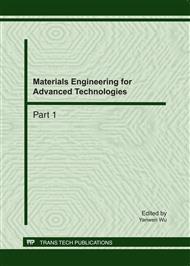p.614
p.619
p.624
p.629
p.634
p.639
p.644
p.650
p.656
Die Parameters Optimized for Drawing of AZ31 Magnesium Alloy Sheet by Finite Element Method
Abstract:
In this study AZ31 sheet with a thickness of 1.2mm and diameter of 52mm was simulated to press into a dish by a finite element method(FEM) software, which to obtain better processing of plastics forming of magnesium alloy by varying die parameters. In order to find the way of development on drawing property and to formulate the rational stamping processing, simulations have been applied on the maximum principal stress various with round radius of dent die and round radius of punch and die gap. Simulation results show that: to obtain a dish of 29mm diameter, a sheet of AZ31 magnesium with a thickness of 1.2mm and diameter of 52mm has been drawn, the fracture occurring at the corner of dish wall bottom. the ability of drawing varies with the round radius of dent die, which better radius is 3.8 mm. In the same way better round radius of punch is 3.0 mm, while better half gap is 1.8mm. Experiments also show that high diameter ratio has been increased with the various of die parameters and forming ability of material has been developed. It is reliable of simulation of finite element method.
Info:
Periodical:
Pages:
634-638
Citation:
Online since:
June 2011
Authors:
Price:
Сopyright:
© 2011 Trans Tech Publications Ltd. All Rights Reserved
Share:
Citation:


